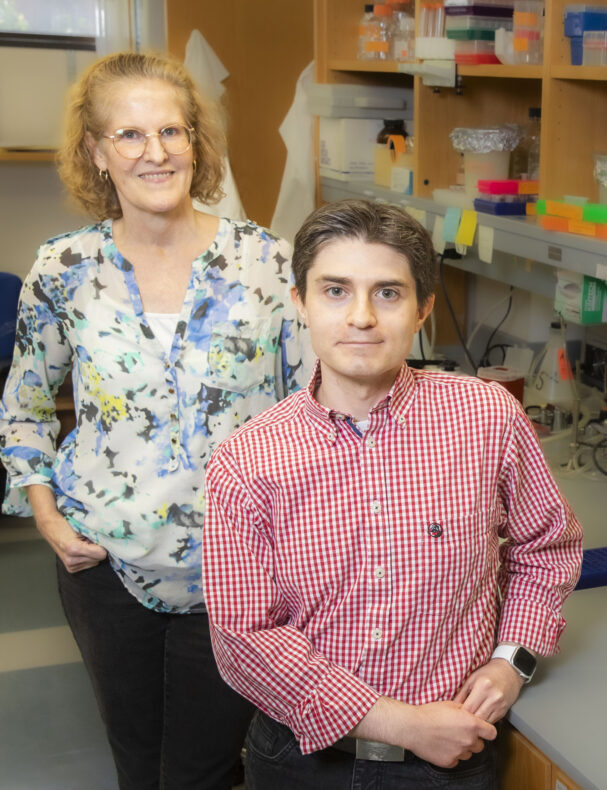
Neural circuits are remodeled during brain development and to sustain learning and memory. The molecular mechanisms that control this “synaptic plasticity” are poorly understood.
In the nematode worm, C. elegans, cholinergic inputs to DD motor neurons are relocated to new positions during early larval development. Graduate student Siwei He, David Miller, Ph.D., and colleagues have determined that the immunoglobulin-like protein OIG-1 antagonizes the relocation of acetylcholine receptors in DD neurons. The transcription factor IRX-1 reduces OIG-1 gene expression to unleash the synaptic remodeling program. In VD neurons, which do not remodel, another transcription factor maintains high levels of OIG-1 to block the relocation of acetylcholine receptors.
The findings, reported in the Oct. 5 issue of Current Biology, define a gene expression program that controls the timing of synaptic remodeling. Understanding the genetic factors that regulate synaptic plasticity could point to new therapeutic approaches for human diseases that disrupt synaptic connections.
This research was supported by National Institutes of Health grants NS081259, NS077929, NS064263.
Send suggestions for articles to highlight in Aliquots and any other feedback about the column to aliquots@vanderbilt.edu

















